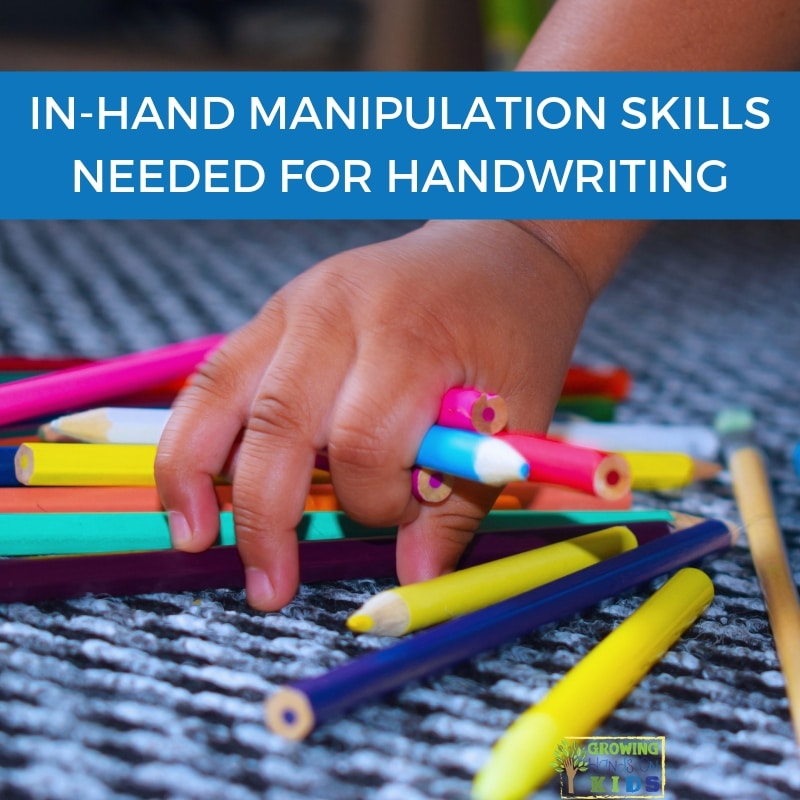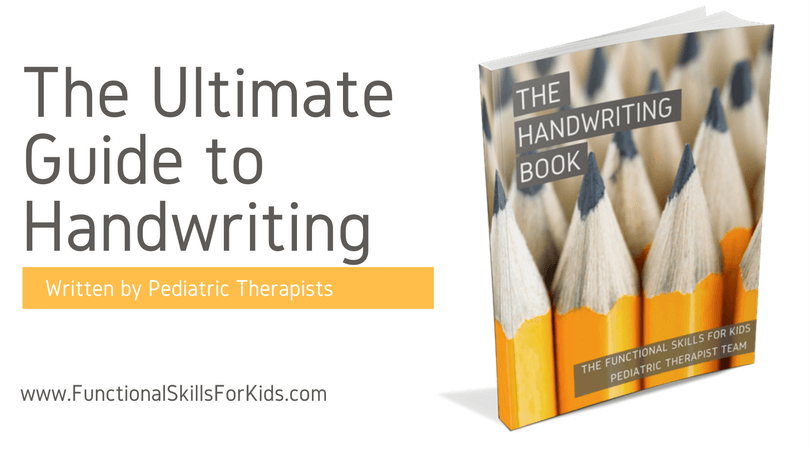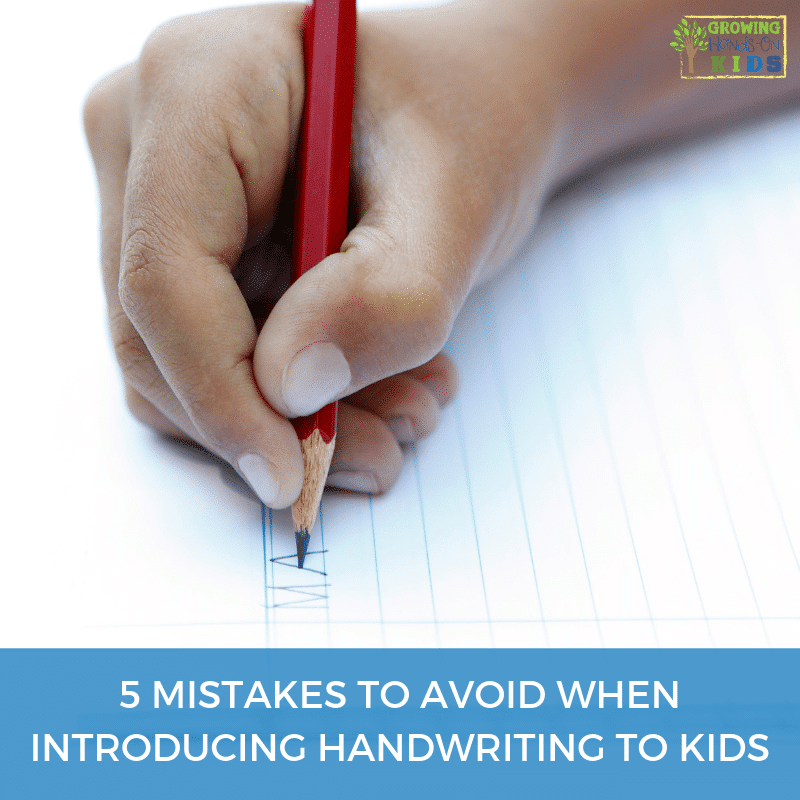In-hand Manipulation Skills Needed for Handwriting
Affiliate and Referral links are used below to promote products I love and recommend. I receive a commission on any purchases made through these links. Please see my disclosure policy for more details. As an Amazon Associate, I earn from qualifying purchases.
In-hand manipulation skills are an important part of handwriting, fine motor, and everyday life skills. Today we are going to take a look at the basic patterns of in-hand manipulation skills needed for handwriting.
Why In-Hand Manipulation Skills Matter
When you think about all the ways you move a pencil for handwriting, this is why in-hand manipulation skills are important.
You need to be able to pick up the pencil and move it into the correct position for writing with the fingers. While writing you may need to adjust your fingers on the pencil or writing tool. You may need to flip the pencil to erase something.
In hand-manipulation skills are needed for a variety of activities such as moving the paper while you are cutting or using scissors, using a fork or knife while eating, tying your shoes, etc.
A child who is struggling with in-hand manipulation skills may be slower with these tasks or unable to complete them at all.
In-hand manipulation skills include five basic patterns. These include:
- Finger-to-palm translation
- Palm-to-finger translation
- Shift
- Simple rotation
- Complex rotation
Let’s take a look at each of these.
|| Finger-to-Palm Translation
For this pattern, a child uses the pads of the fingers and thumb to move the object into the palm of their hand. Then they release the fingers so that the object can sit in the open palm of the hand or in a palmar grasp.
An example of this skill would be picking up a coin and moving it into the palm hand with the fingers.
|| Palm-to-Finger Translation
Palm-to-finger translation is the reverse of finger-to-palm. This pattern also relies on isolated control of the thumb. The child will start with the fingers flexed (or bent) around an option and then move to fingers extended (or opened) while moving the object with the thumb up into the fingers.
An example of this skill would be moving the coin from your hand to your fingers and putting the coin into a vending machine.
This is a harder skill for children to master.
|| Shift
Shift happens when you are moving an object with the fingers while the thumb is supporting. There may be slight movement from the thumb, but it is typically not used in order to shift an object. Most of the movement comes from the fingers as you move the object into a better position for the activity.
An example of this would be when you separate two pieces of paper, move a coin into position to put into a vending machine, or adjusting a pen or pencil after you grasp it in order to get your fingers closer to the end of it for writing.
It is also frequently used for dressing tasks such as buttoning, fastening snaps, lacing shoes, and putting a belt through a belt loop.
|| Simple Rotation and Complex Rotation
Simple rotation is when a child turns or rolls an object with the finger pads approximately 90 degrees or less. The fingers act as one unit while the thumb is in the opposite position.
An example of this would be unscrewing a bottle cap, moving a puzzle piece to make it fit,
Complex rotation is when an object is turned from end to end, such as flipping a pencil from the writing tip to the eraser tip.
Activities for In-Hand Manipulation
Here are some activities that can help promote good in-hand manipulation skills with your children.
- Using chopsticks (for eating or to pick up smaller objects during a fine motor activity)
- Spinning tops
- Stringing beads
- Make a paperclip chain
- Hole punch art
- Pencil walking and pencil flips
- Putting coins in a piggy bank
- Peeling stickers
- Play Jacks game
- Play Connect 4
- Any card games that involve shuffling or holding the game cards to play (Uno, Phase 10, etc)
- Bingo
- Pencil windmills (see the link below)
- Pencil twirls (see my handwriting warm-up activities post for more ideas)
Here are some more resources for you in regards to handwriting.
You May Also Like:

Heather Greutman, COTA
Heather Greutman is a Certified Occupational Therapy Assistant with experience in school-based OT services for preschool through high school. She uses her background to share child development tips, tools, and strategies for parents, educators, and therapists. She is the author of many ebooks including The Basics of Fine Motor Skills, and Basics of Pre-Writing Skills, and co-author of Sensory Processing Explained: A Handbook for Parents and Educators.



